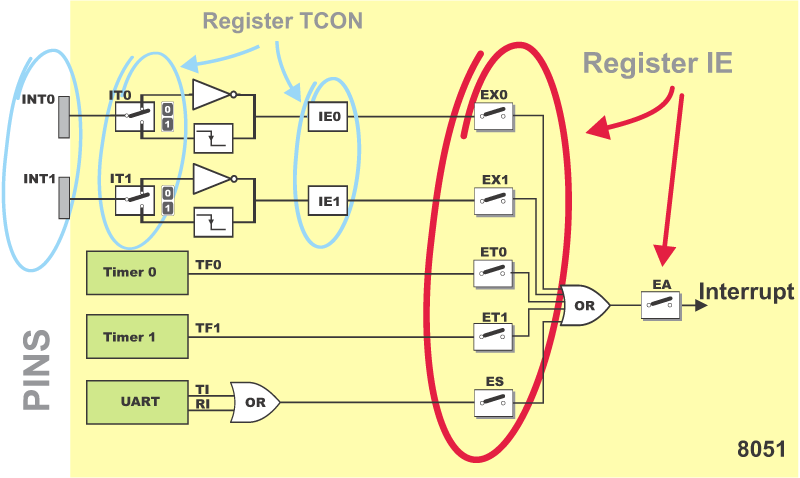Mikroc Serial Interrupt
In this simple Peripheral UART Rx event interrupt Example using the PIC18F45K22 which has 2 UART modules, Whenever there is data sent to the serial port (the PIC USART), it will trigger the USART receive interrupt (interrupt on serial RX pin), if the sent character is 1, the microcontroller will execute the. Uart interrupt mikroc - PIC32 UART interrupt - PIC32MX250F128D UART rx and tx problem - AVR interrupt help (Serial receive) - Finger Print scanner interface - question about internal interrupt-MikroC!!! - programming for PIC 16F877a.

Table of Contents • • • • This is a simple demo project showing how to setup an driven serial port with buffering using the existing mbed support without talking directly with hardware. There is also a project that talks directly to UART hardware registers and it is probably more efficient time wise and easier to use, but it is a bit more difficult to understand all of the low level hardware code details. Also there is a new project.
Serial ports can transmit and receive data at the same time. Serial handshaking lines to start and stop the data flow are typically not used or connected, so using interrupts along with buffering of character data is typically required to avoid loss of characters at high baud rates on serial ports. UARTs have an internal FIFO buffer to hold perhaps 16 characters or so, but it is just not large enough. The other important advantage is that using interrupts saves processor time, since code does not spin in I/O wait loops constantly checking slowly changing I/O status bits. Two are used to hold serial data with an in and out pointer. One buffer is used for TX data buffering and one for RX data buffering. In is the location where new data is added to the buffer and out is the buffer location where data is removed.
When in and out are incremented and reach the end of the buffer they wrap around using mod (i.e.,%) buffer size. The buffer empty condition is in=out and the buffer full condition is (in + 1)% buffer size = out. Using attach, you can specify the interrupt handler function for serial receive and serial transmit.
In general, interrupt routines should not call any library functions unless you know that they are. Typically, they are not reentrant. Most hardware I/O devices cannot be in use in the main program and also used by an interrupt routine without problems. Win Xp Home Edition Ulcpc Download Youtube.
Torrents Hacker Experience. Mutual exclusion may also be needed on such hardware devices by disabling interrupts in the main program whenever the I/O device is being actively used. Formatted IO using sprintf and sscanf Getc and putc will work with interrupt routines, but in many cases formatted I/O using printf or scanf would be more desirable. Printf() in its current version cannot currently be used with any serial interrupt routines that use getc. Even a printf to a different serial port such as USB that does not have an interrupt handler will lock up, if one serial port has interrupt code using getc. This is likely some reentrancy issue with the two functions. For buffering, sprintf needs to be used in any case.